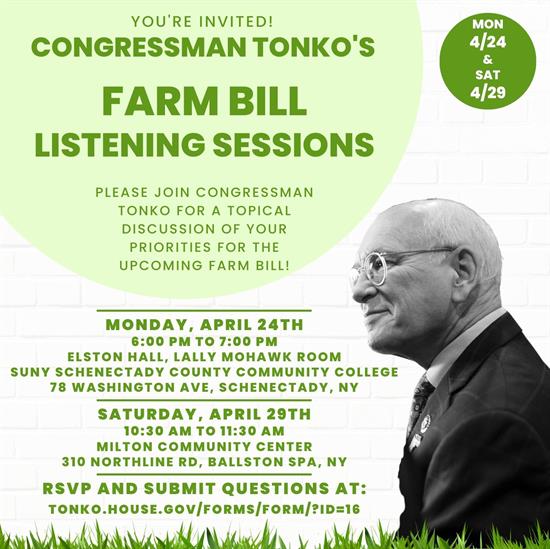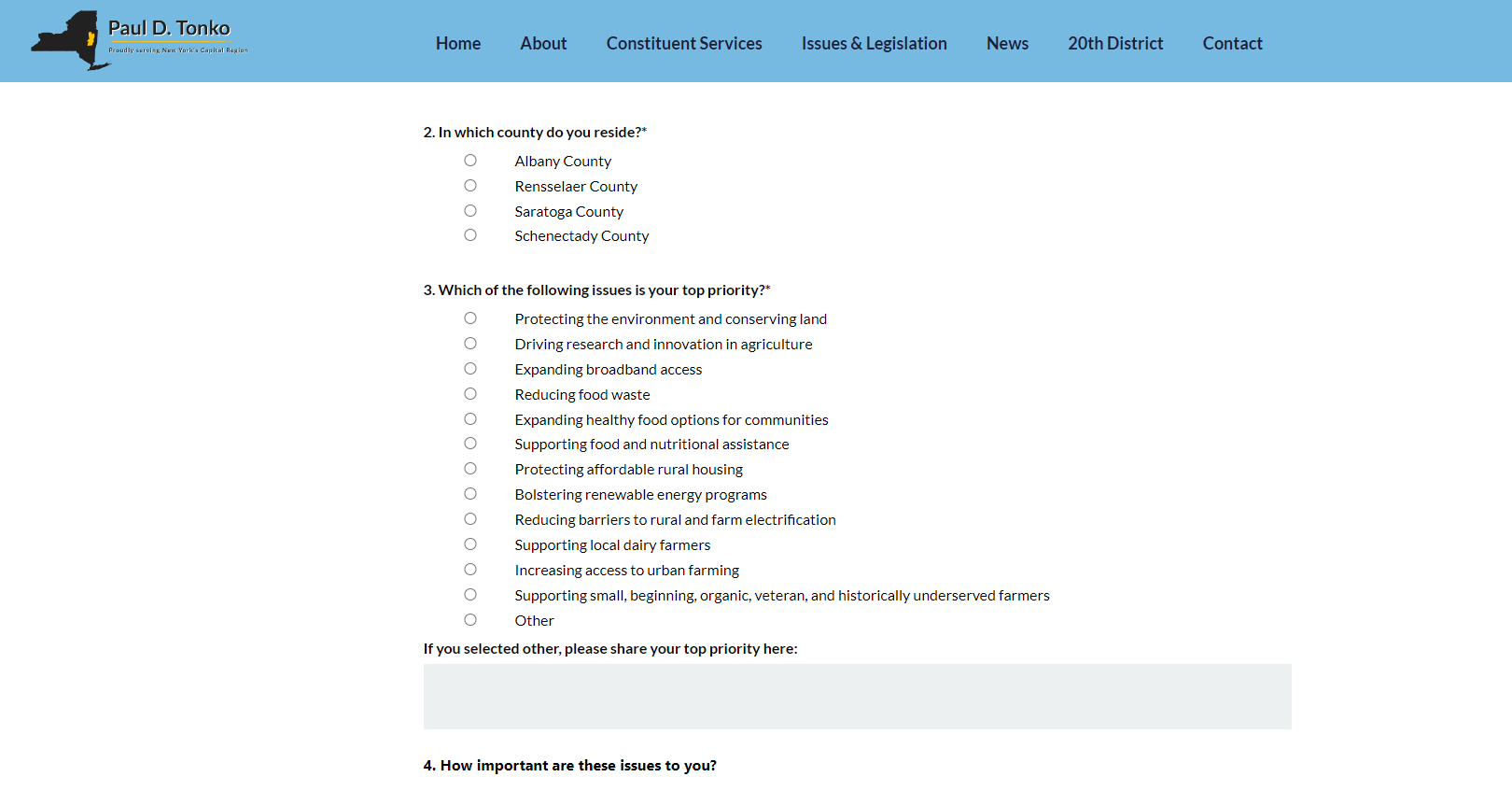I held two Farm Bill listening sessions in the district on 4/24 and 4/29. Check out this flyer below for more details. And thank you to all who took the time to attend and share their insights!
What is the Farm Bill?
Every five years or so, Congress advances a legislative package that covers an immense range of issues that impact the American people, from agriculture and nutrition to broadband and energy investments.
That legislation is called the Farm Bill.
The first U.S. Farm Bill was enacted 90 years ago as part of President Franklin Delano Roosevelt’s New Deal. Its goals were: to keep food prices fair for both farmers and consumers; to ensure an adequate food supply; and to protect and sustain the country’s vital natural resources.
Over the better part of a century, an additional 17 Farm Bills have been passed by Congress, with the last passed in 2018. Every new package is updated and adjusted to address the most pressing challenges our farmers, consumers, and citizens face.
That latest bill expires this year, in September 2023, so Congress will once again come together to debate, and advance another Farm Bill.
12 Titles of the Farm Bill
The Farm Bill has separate sections called ‘titles’ that cover a wide range of policy areas to meets the needs of the American people. The 2018 Farm Bill had 12 titles. Those titles are:
- Commodities – covers price and income support for farmers who produce certain, non-perishable, widely traded crops, such as corn, wheat, and rice – as well as dairy and sugar. Commodities also covers agricultural disaster assistance
- Conservation – helps farmers implement natural resource conservation efforts on working lands
- Trade – supports food export subsidy programs and international food aid programs
- Nutrition – funds the Supplemental Nutrition Assistance Program (SNAP) benefits and several smaller nutrition programs to help low-income families afford food
- Credit – includes federal loan programs designed to help farmers access credit needed to grow and maintain their farming operations
- Rural Development – fosters rural economic growth through rural business and community development programs and grants, including support for broadband, housing, and infrastructure
- Research, Extension, and Related Matters – promotes farm and food research, education, and extension programs designed to expand academic knowledge and help empower farmers to become more innovative and productive
- Forestry – supports forestry management programs run by USDA’s Forest Service through the management of public and private land
- Energy – encourages growing and processing crops for biofuel, assists with installation of renewable energy systems, and supports research related to energy
- Horticulture – oversees farmers market and local food programs, and organic farming and certification programs
- Crop insurance – provides subsidies to farmers to private crop insurance companies to protect against losses in yield, crop revenue, or whole farm revenue
- Miscellaneous – the catch-all title, supports programs and assistance for socially disadvantaged, and veteran farmers, agricultural labor safety and workforce development, and livestock health
I want to hear from you!
Now that you know more about the history of the Farm Bill and its significance, I would like to hear from all of you!
What are your thoughts on how we can improve this package to best meet the needs of our communities?
Please let me know by clicking the image below and filing out the survey!
I will review your insights and share them with my peers in Washington to ensure that our Capital Region’s voice is heard and the programs that matter most to you are included in our next Farm Bill.


